A near perfect sandy semi-circle, bound by rocky, grass-carpeted cliffs and a coastal path to nearby Padstow: Harlyn Bay is certainly one of north Cornwall’s prettiest beaches. It’s also one of the safest – not just because of the shelter the bay offers from the powerful swells, but also because of the RNLI lifeguard team who patrol its shores daily.
To find out just what goes into being an RNLI (Royal National Lifeboat Institution) lifeguard, I’m spending the day with the Harlyn Bay team. Torquay-born Joel Wain has served eight years as a lifeguard, while former surf instructor Seb Scott-Bray is in his first season. Along with Jack Ralphs – at 19, the youngest recruit – they ready the day’s kit and run the engine of their inshore rescue boat, or IRB. Preparation and maintenance is an essential part of the routine; the reliability of equipment can be the difference between life and death.
Senior lifeguard Vinny Prescott rolls over the dunes in a RNLI-liveried Ford Ranger and the team load up with lifesaving freight: marker flags, rescue boards, a casualty care bag. With 13 seasons under his belt in the UK and several overseas, Prescott is the most experienced member of the team and a career lifeguard.
-
Transporter, shelter, viewing platform, PA system … the Ford Ranger plays a vital role in safeguarding the beach
An important part of his job is to manage resources and triage incidents. “Harlyn Bay is usually busy, but with the pandemic it’s become more crowded than ever. My job is to make sure that I keep the public safe, but also my team,” he says. In an emergency, he has to assess all the factors calmly, despite the impulse to rush in. This is when training and experience pay off.
Joining Wain and Ralphs for the first patrol, I learn why the Ranger is such a vital and versatile piece of equipment. Covering a beach more than half a mile wide at low tide, the lifeguards need to quickly navigate the terrain of sandbanks and streams while carrying a substantial amount of kit. The vehicle acts as a portable base providing shelter from the elements, as a viewing platform to give lifeguards a higher vantage point over the waves, and has a PA system if they need to issue warnings. It can even launch and recover the IRB from the water. It plays a fundamental role in safeguarding the beach – second only in importance to the kettle, jokes Scott-Bray.
The next priority is to mark out the area the lifeguards deem safest for swimming with red and yellow flags. The zone is adjusted throughout the day depending on the tide, currents and conditions. Wain and Ralphs park metres from the water’s edge, plant the flags and settle into the vehicle’s cabin for the first watch.
Prescott and Scott-Bray remain at the lifeguard hut, fielding questions from the public with genial patience while scanning the horizon for potential issues. Lifeguards are the public face of the RNLI, a charity reliant on fundraising, and building good community relations goes a long way. Walkie-talkies chirrup as Scott-Bray checks in with the patrol and neighbouring beaches.
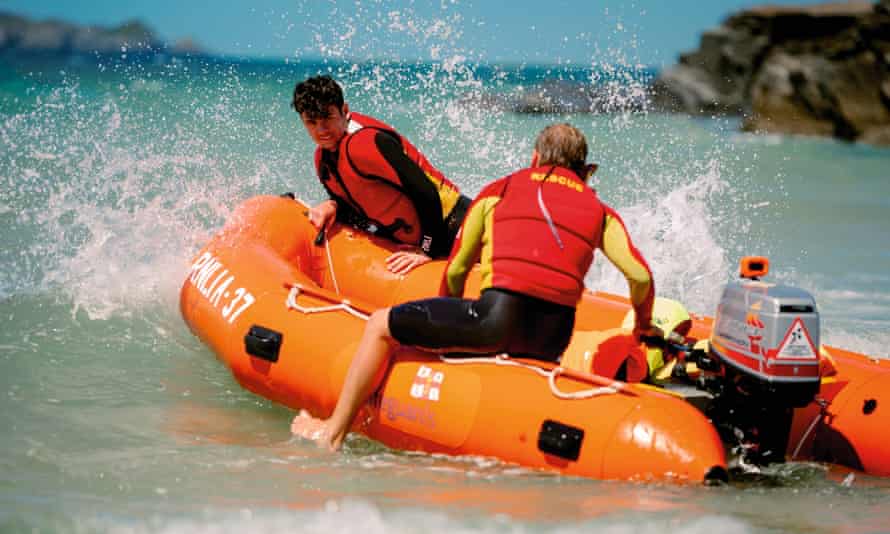
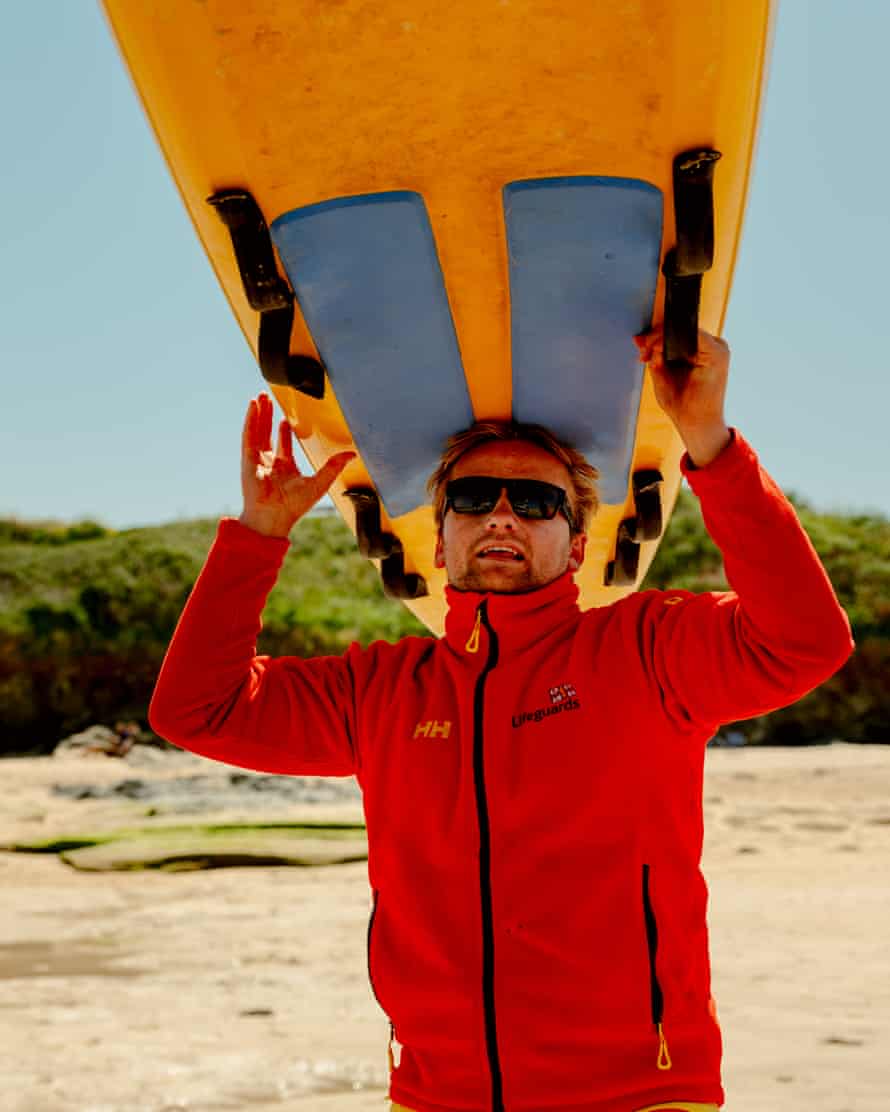
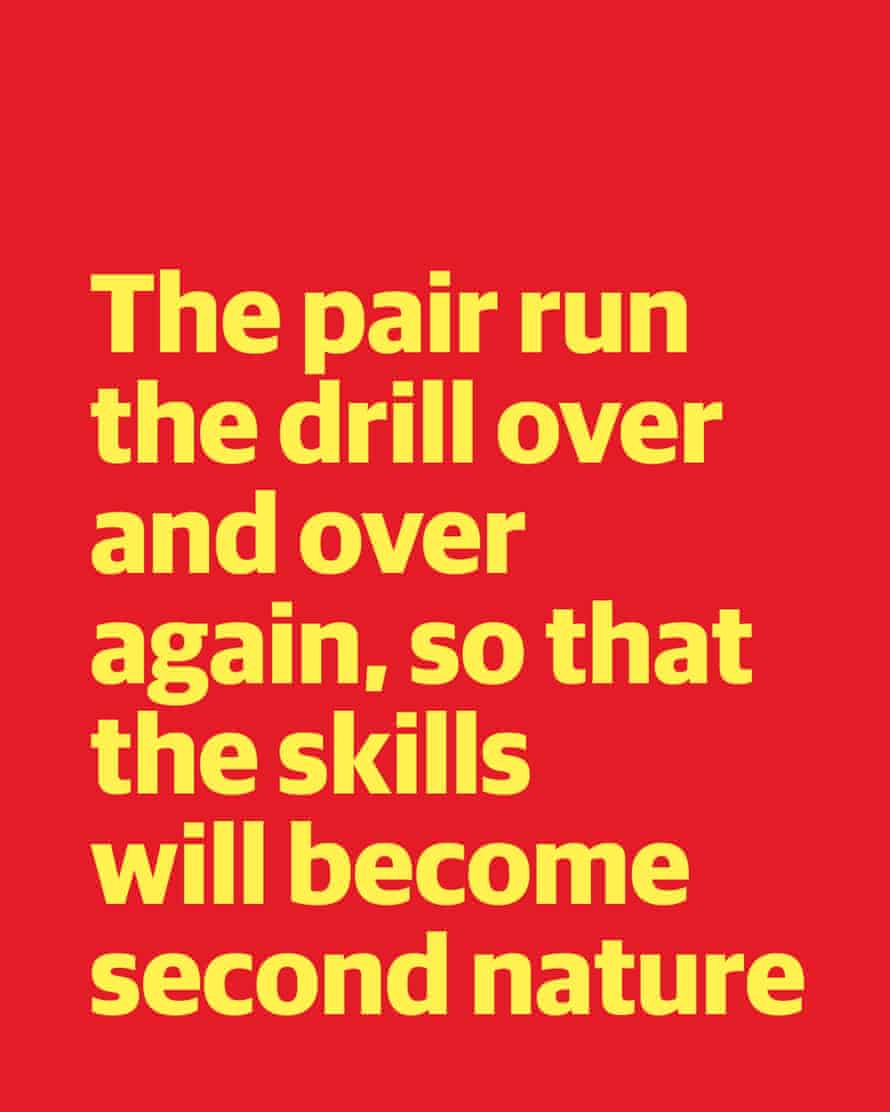
It might seem a peaceful scene to the untrained eye, but as I start to see it from the lifeguards’ perspective, the beach comes alive with potential hazards. The neoprene-clad children coasteering. Novice surfers throwing themselves at the waves. A paddleboarder drifting towards a rip. Dozens of dunes and rock pools, with parasols obscuring the view.
As the saying goes, a good lifeguard is a dry lifeguard, meaning prevention is key. That said, many incidents occur long before people even make it to the water – lost children, fallen coastal path walkers, cardiac events. As trained first responders, lifeguards deal with everything from lacerations and impact injuries to anaphylaxis.
Today, it’s weever fish stings; Prescott carries a 10-year-old boy to the hut. Weever fish tend to sunbathe in the shallows exposing venomous dorsal fins to unsuspecting feet. The stings are harmless overall, but can be very painful. Prescott fills a washing-up bowl from the hot kettle to help break down the poisonous proteins in the boy’s foot, handing him a leaflet about weever fish as a distraction.
However, the most dangerous “animal” on the beach is probably the ubiquitous inflatable unicorn. Lightweight and easily capsized, inflatables can be quickly swept out to sea on a windy day. As part of Ford’s Tide Tracks initiative with RNLI, Ford commissioned custom tyre treads to imprint safety messages in the sand – including “NO INFLATABLES” – to raise awareness of this risk.
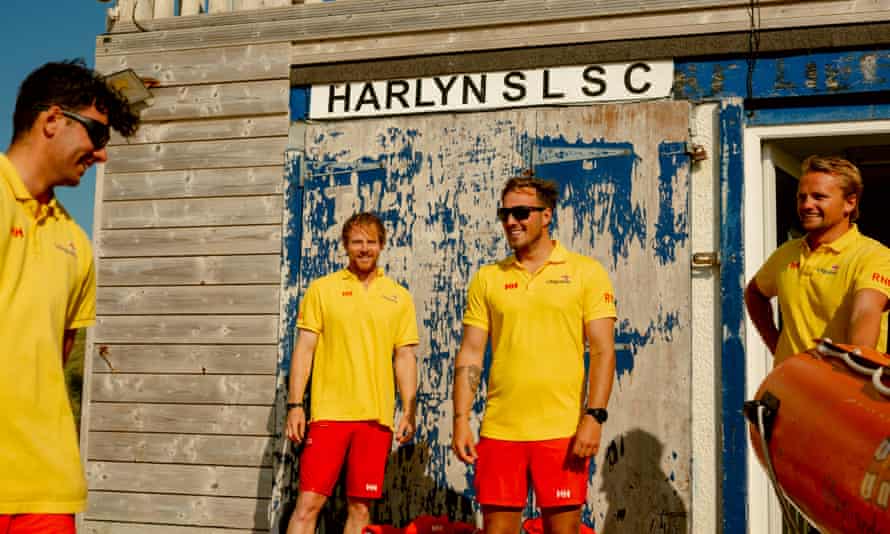
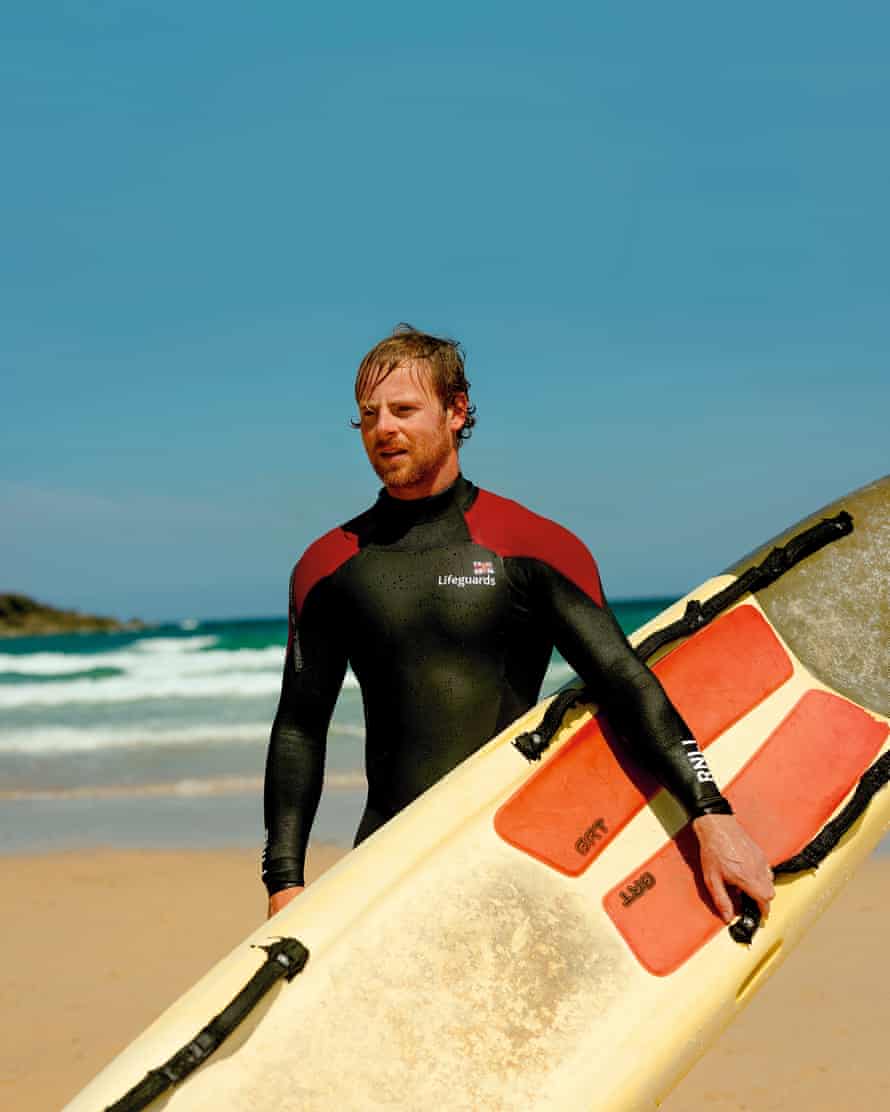
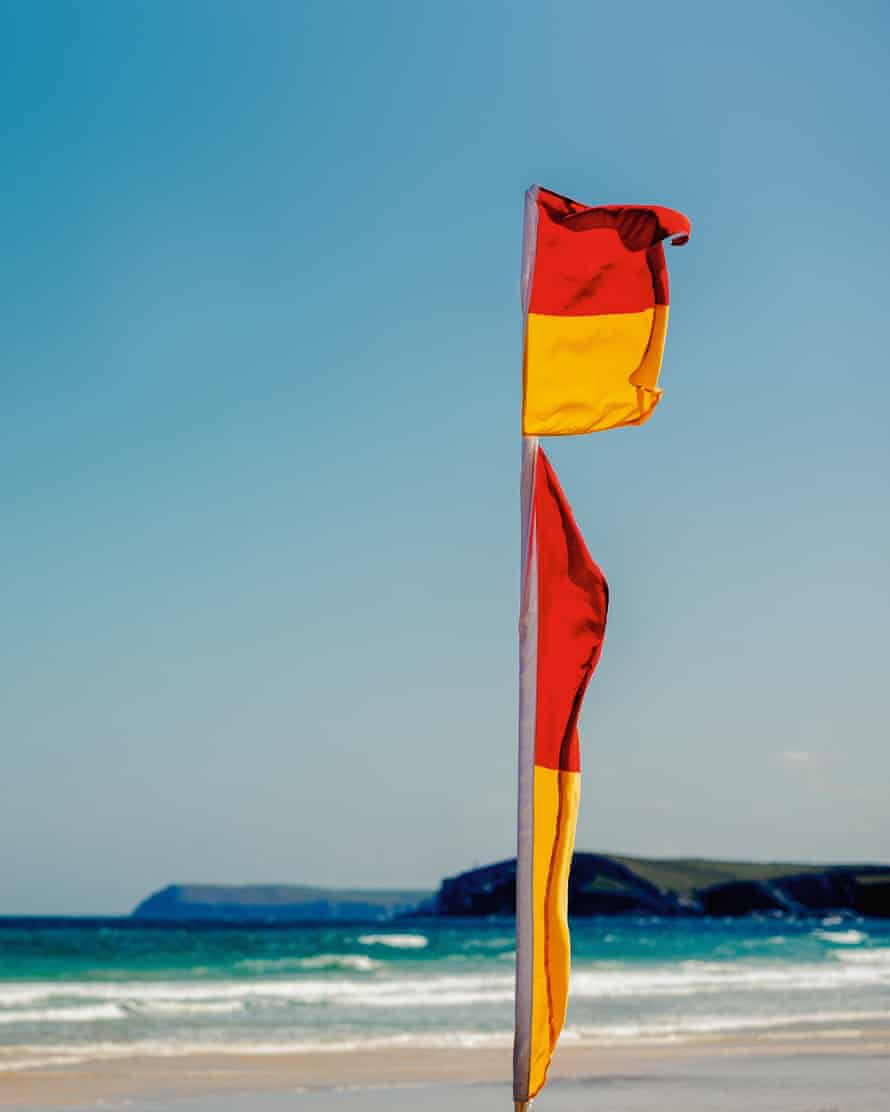
As the day progresses, Prescott takes Ralphs out for rescue boat training. IRBs are fast and manoeuvrable, but handling them requires expertise and seamless teamwork: you have to know when to use your weight as a counterbalance, when to fling yourself on to the bow to punch through a wave, when to lean.
Prescott and Ralphs ditch a dummy in white spray by the cliffs, and arc away leaving it stranded. It is a tough rescue prospect – to lift a slippery moving target with a dead weight of about 40kg wet, from above, into a sea-battered IRB is a real test of dexterity and strength.
The pair run the drill over and over again: Prescott expertly steering through the waves, Ralphs tirelessly scooping the dummy into the boat, so that the skills will become second nature.
Back on land that afternoon, a lively spring tide has submerged much of the wide seaweed-laced stretch of sand. Wain announces the lifeguards’ departure on the PA, retrieves the flags and heads back to base. As Scott-Bray rinses down the Ranger, you get the sense that man and machine are ready for whatever the next day brings.
Make sure to stay safe this summer by visiting a lifeguarded beach. To find out how Ford supports the RNLI’s life-saving work, visit ford.co.uk






